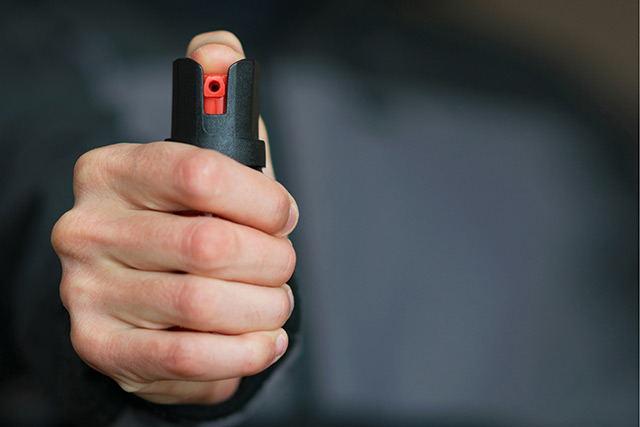How to prep if your loved ones have food sensitivities or allergies
11/03/2019 / By Grace Olson

It’s already difficult to find nutritional food with long shelf lives, but it becomes harder when you have a food allergy. When disaster strikes and food becomes limited, any person with a food allergy would have a hard time finding something to eat. As a prepper, you need to take that into consideration when stocking up on food supply. (h/t to BeansBulletsBandagesAndYou.com)
1. Is anyone allergic?
Food allergies affect 32 million people in the U.S., with 5.6 million comprising of children. That means that one in 13 children has food allergies.
Find out first if any of your family members, including yourself, react negatively to certain foods.
There are eight well-known food allergens:
- Milk
- Egg
- Peanuts
- Tree nuts
- Wheat
- Soy
- Fish
- Crustacean shellfish
Allergic reactions to any of these foods comprise most of the serious accounts of food allergies in the U.S. In an SHTF situation, some preppers may try eating edible plants, like dandelions and cattails. Make sure to have your family members checked for those, too.
Try different kinds of meals, and observe your family members’ reactions. Here are common signs:
- Difficulty breathing or wheezing
- Dizziness
- Tight feeling in the chest or lungs
- Swelling in the face, especially the tongue, lips, or throat
- Redness
- Itchiness
- Abdominal pain
- Vomiting
- Nausea
- Diarrhea
Seek medical attention immediately if any of your family members show these signs. Reactions to food allergies can be dangerous, including anaphylaxis, an immediate violent response that may potentially cause death.
2. Pick the right foods
After identifying any food allergies, you now know which foods to avoid. When buying raw ingredients, it’s easy because you can avoid the allergen outright. However, it’s harder when you’re buying processed foods.
Follow these tips to prevent allergic reactions to these foods:
- Read the labels. Manufacturers often put labels, like “gluten-free,” but it’s best to check the list of ingredients on the packaging itself. If you’re eating in a friend’s house or a restaurant, make sure to inform your friend or the waiter about your allergies.
- Find out alternative ingredient names. Manufacturers use a variety of names in their food labels. For example, peanuts are also called beer nuts or ground nuts. Do your homework and learn more about your food allergen.
3. Make your own foods
The key to ensuring that your food does not have any allergens is to make them yourself. There are different ways for you to preserve food, including:
- Freeze drying – This is the most optimal method to use when preserving food. It sucks out all the moisture, making them last longer. Moreover, you only need to add water to freshen them once more. However, it requires you to invest in a freeze-drying machine. These devices are often quite expensive, but cheaper options have recently become available in the market.
- Dehydration – It shrinks your food into little chips, making them great snacks. Dehydrators cost less than freeze dryers, but freeze-dried food lasts longer. Simply add water to the food and let it soak in a while.
- Canning – Compared to the previous methods, canning is more cost-effective and has been practiced for a long time. Acid foods (like fruits and vegetables) with a low pH level can easily be preserved through boiling water bath canning. On the other hand, low-acid foods (such as meats and stews) need a pressure canner to be preserved. Some downsides are bulkiness for storage and fragile jars.
Here are some things to remember when preserving your own food:
- Avoid cross-contamination. Store the ingredients properly in sealed containers. Label them to avoid confusion. Set aside space specifically for meals of family members who have food allergies.
- Bring cleaning supplies. When preparing meals, make sure to clean the pots and other utensils. Add cleaning supplies, like dishwashing soap and sponges, to your emergency kit.
4. Prepare for allergic reactions
Mild symptoms of allergic reactions can last from a few hours to a few days. However, a serious reaction needs to be treated immediately. (Related: How to treat your allergies without needles or shots when SHTF.)
The most effective emergency treatment is injectable epinephrine or EpiPen. In the case of anaphylaxis, it needs to be injected within minutes to curb the violent side effects. For preppers with food allergies, they need to be part of their emergency supplies.
However, EpiPens have relatively short shelf lives. Labels state they can last up to 18 months. Some studies point out that they can be used for up to four years, but they are less effective by then. EpiPens also need to be stored somewhere cool and dark.
In an SHTF situation, having food allergies is difficult, but it’s more than possible to prepare for them. It’s smart to have EpiPen supplies, but the best way to avoid an allergic reaction is to learn more about your allergy and prevent reactions from happening in the first place.
Find out more about preparing food for people with special needs at FoodSupply.news.
Sources include:
Tagged Under: anaphylaxis, bug out, canning food, clean food, dehydrating food, emergency food, epiPens, food allergens, food allergy, Food Preservation, food safety, Food storage, food supply, freeze drying, how-to, off grid, pain relief, preparedness, prepper, prepping, SHTF, stored food, survival, survival food, survival gear, survivalist, sustainable living
RECENT NEWS & ARTICLES
COPYRIGHT © 2017 GEAR.NEWS
All content posted on this site is protected under Free Speech. Gear.news is not responsible for content written by contributing authors. The information on this site is provided for educational and entertainment purposes only. It is not intended as a substitute for professional advice of any kind. Gear.news assumes no responsibility for the use or misuse of this material. All trademarks, registered trademarks and service marks mentioned on this site are the property of their respective owners.



















